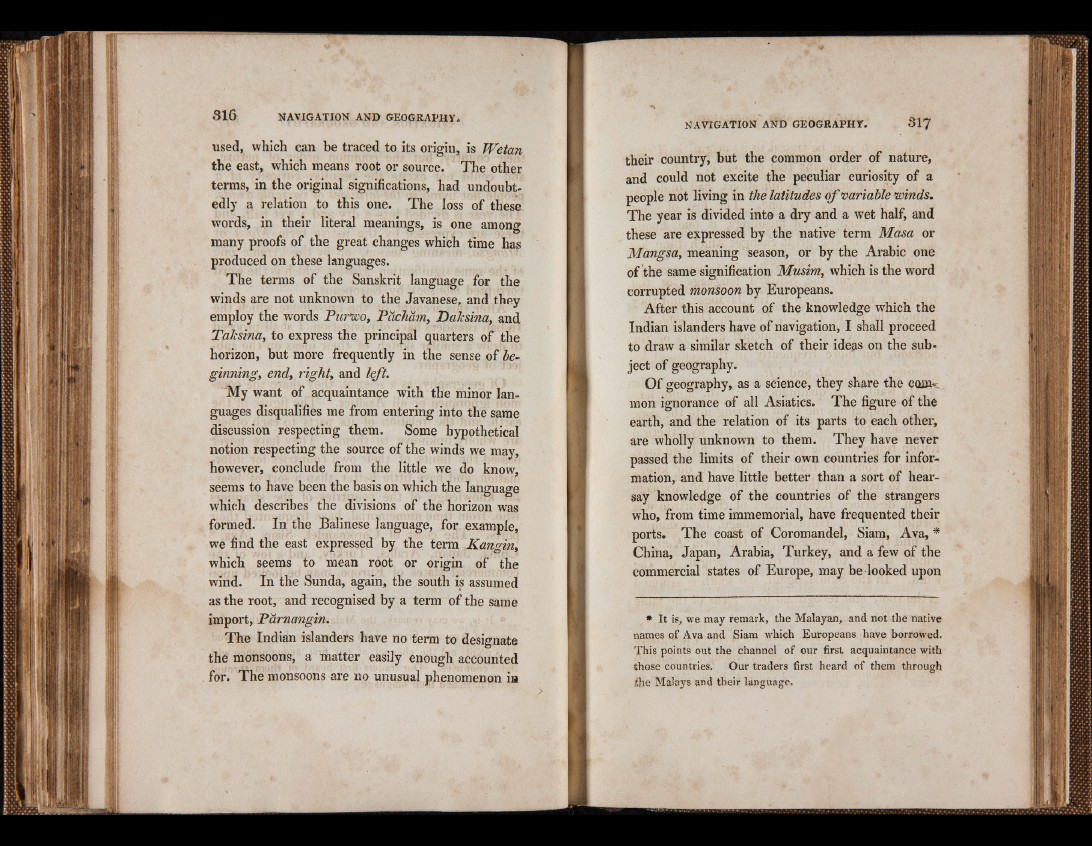
used, which can be traced to its origin, is Wetan
the east, which means root or source. The other
terms, in the original significations, had undoubtedly
a relation to this one. The loss of these
words, in their literal meanings, is one among
many proofs of the great changes which time has
produced on these languages.
The terms of the Sanskrit language for the
winds are not unknown to the Javanese, and they
employ the words Pur'wo, Pdcham, Dahsina, and
Talcsina, to express the principal quarters of the
horizon, but more frequently in the sense of beginning,
end, right, and left.
My want of acquaintance with the minor languages
disqualifies me from entering into the same
discussion respecting them. Some hypothetical
notion respecting the source of the winds we may,
however, conclude from the little we do know,
seems to have been the basis on which the language
which describes the divisions of the horizon was
formed. In the Balinese language, for example,
we find the east expressed by the term Kangin,
which seems to mean root or origin of the
wind. In the Sunda, again, the south is assumed
as the root, and recognised by a term of the same
import, Parnangin.
The Indian islanders have no term to designate
the monsoons, a matter easily enough accounted
for. The monsoons are no unusual phenomenon in
their country, but the common order of nature,
and could not excite the peculiar curiosity of a
people not living in the latitudes o f variable winds.
The year is divided into a dry and a wet half, and
these are expressed by the native term Masa or
Mangsa, meaning season, or by the Arabic one
of the same signification Musim, which is the word
corrupted monsoon by Europeans.
After this account of the knowledge which the
Indian islanders have of navigation, I shall proceed
to draw a similar sketch of their ide^s on the subject
of geography.
Of geography, as a science, they share the corn^
mon ignorance of all Asiatics. The figure of the
earth, and the relation of its parts to each other,
are wholly unknown to them. They have never
passed the limits of their own countries for information,
and have little better than a sort of hearsay
knowledge of the countries of the strangers
who, from time immemorial, have frequented their
ports. The coast of Coromandel, Siam, Ava, *
China, Japan, Arabia, Turkey, and a few of the
commercial states of Europe, may be looked upon
* It is, we may remark, the Malayan, and not the native
names of Ava and Siam which Europeans have borrowed.
This points out the channel of our first acquaintance with
those countries. Our traders first heard of them through
the Malays and their language.